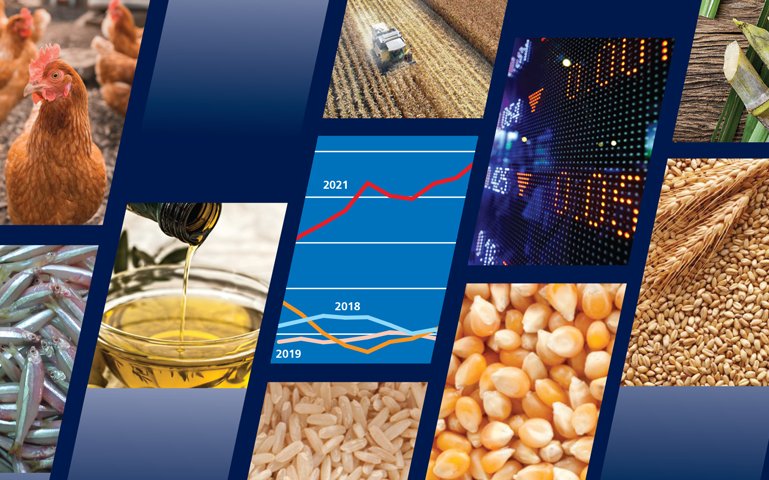The global food trade has accelerated and is poised to hit an all-time record in both volume and value terms, according to a new report released by the Food and Agriculture Organization of the United Nations (FAO).
While global food trade has shown “remarkable resilience to disruptions throughout the COVID-19 pandemic”, rapidly rising prices of food commodities and energy pose significant challenges for poorer countries and consumers who spend large shares of their incomes on these basic necessities, FAO said in its new Food Outlook.
FAO expects the global food import bill to reach an all-time high in 2021 and surpass $1.75 trillion, marking a 14% increase from the previous year and 12% higher than the earlier forecast in June 2021. The increase is driven by higher price levels of internationally traded food commodities and a threefold increase in freight costs.
Developing regions account for 40% of the total and their aggregate food import bill is expected to rise by 20% compared to 2020. Even faster growth is expected for Low-Income Food Deficit Countries, due to higher costs more than higher food import volumes.
Issued twice a year, Food Outlook offers FAO’s reviews of market supply and demand trends for the world’s major foodstuffs, including cereals, vegetable oils, sugar, meat, dairy and fish. It also looks at trends in futures markets and shipping costs for food commodities.
Takeaways
World output prospects for major cereals remain robust, with record harvests expected in 2021 for maize and rice, although cereal utilization for human consumption and animal feed is forecast to grow faster.
Following a tight balance in 2020/21, preliminary forecasts for the 2021/22 season point to some improvements in the overall supply situation for oilseeds and derived products, but their respective end-season stocks could remain below average.
Fisheries and aquaculture output in 2021 is forecast to grow by 2.0% from the 2020 level, signaling that new market dynamics resulting from the pandemic – which exacted a heavy toll on this sector – appear likely to endure in the long term. Fish trade is bouncing back despite high freight costs and logistical delays.
Financial instruments such as futures and options related to major agri-food commodities have failed “to attract the speculative fervor marked by other high-priced years,” the report observes.
Special chapter on agricultural input prices
FAO experts constructed a Global Input Price Index (GIPI) to help examine the impacts of rapidly rising input prices, especially those of energy derived from fossil fuels, on food prices, future price developments and their likely consequences for global food security. The exercise reveals that the GIPI, comprising energy, fertilizers, pesticides, feed and seed prices, and the FAO Food Price Index (FFPI), which tracks the internationally traded prices of major agricultural food commodities and reached a ten-year high in August 2021, have moved in a synchronous manner since 2005, indicating that higher input costs readily translate into higher food prices. Up to August 2021, the FFPI rose by 34% and the GIPI increased overall by 25%, compared to the same period in 2020.
It was noted that aggregate global measures mask large regional and sector-specific differences within agriculture. Soybean producers, for example, face lower needs of currently expensive nitrogen fertilizer, so they should benefit from higher product prices. Pig producers, by contrast, face high feed costs and low meat prices, crimping margins.
The analysis offers insight into potential strains. Sub-Saharan Africa, for example, depends on imports of nitrogen, the price of which is driven by those of fossil fuels, for around 70% of supply. It also points to a growing number of countries, now 53, where households spend more than 60% of their income on necessities such as food, fuel, water and housing.
Check out the report here.










